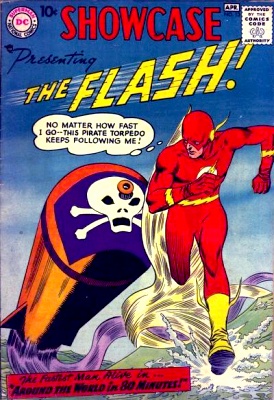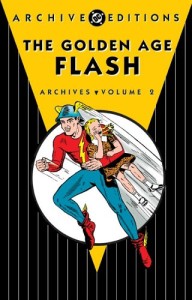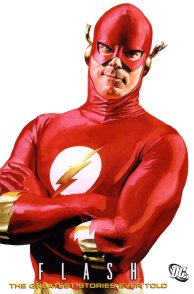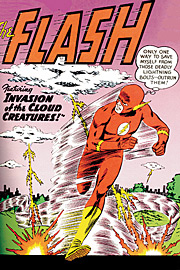Central City is big. You just won’t believe how vastly, hugely, mind-bogglingly big it is. I mean, you may think it’s a long way down the road to the chemist’s, but that’s just peanuts to Central City. (With apologies to Douglas Adams.)
It’s an old post, but I just found the Absorbascon’s take on Central City, looking at the wide expanses depicted in Carmine Infantino’s Silver-Age drawings of the Flash’s hometown.
What is this vast complex? The National Science Center? NIH? STARLabs HQ? No. It’s Barry Allen’s back room. In his APARTMENT. In your house, this sort of room is barely big enough to hold the Cybex machine you don’t use. In a Central City apartment, it’s about the size of a bowling alley.
On a related, but more serious note, letterer Todd Klein has posted a 4-part study of the Flash Logo from 1940 through the present day: Part 1 · Part 2 · Part 3 · Part 4. With his insider knowledge, it’s far more thorough than the study I did a few years ago. (via Wallyoeste)
![The Flash (Barry Allen) from his first appearance in Showcase #4, 1956 [Picture of the Flash (Barry Allen) from Showcase #4]](https://hyperborea.org/journal/wp-content/uploads/2008/05/barry1.png)



